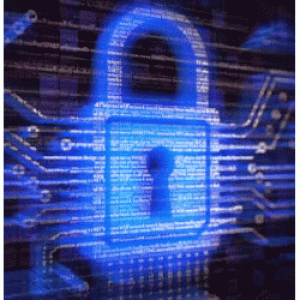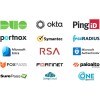AS400 Security Access Controls Auditing Compliance iSeries Exit Point DB2 Database
The AS400 security, auditing and compliance suite provides tools to monitor, audit and secure user access to DB2 database files, libraries, IFS files and directories and any command run from user workstations accessing the IBM i over the network using exit programs.
The AS400 security and auditing software suite addresses compliance regulations for controlling access to sensitive data and automated audit reporting.
The Enforcive AS400 security software runs natively on any iSeries or IBM i model with OS400 V7R1 or higher.
The GUI client is a HTTP interface that provides all security monitoring and management features for an unlimited number of users, and its intuitive point and click interface allows any administrator to implement AS400 security access control policies for exit points in minutes, and can enable auditors to run audit reports without having to involve IT.
The security, auditing and compliance software is installed and configured on a customer’s AS400 for free by a certified engineer, and includes unlimited remote training, consulting and support services with a standard maintenance agreement.
The IBM i iSeries AS400 security tools included with Enterprise Security Suite are as follows:
GUI Management Console
A GUI client running on IBM i HTTP Apache Server capable of managing all AS400 Systems and LPARs from a single console, simplifies security and auditing implementation and ongoing administration. The intuitive GUI interface masks all the complexities of AS400 security and auditing tasks, so that almost any person can implement and manage compliance requirements.
Application Access Control
Is an Intrusion Prevention System (IPS) enabled by AS400 exit programs and APIs that allow administrators to point and click implementation of object level security policies via the GUI client that prevents unauthorized TCP/IP and SNA access to the system, DB2 files, IFS and command usage. AS400 security policies can be enforced for User Profiles, IBM Group Profiles, Virtual Groups and IP address/range for each Application or Host Server and any command on the AS400 system. AS400 Access Control policies can be simple, securing access to network protocol usage such as Database Server “ODBC/JDBC applications”, FTP Server, FTP Client, RMTCMD, DDM, File Server, commands, etc. and like exit points, or policies can apply 3 additional levels of controls, including permitting or rejecting user operation/actions for each network protocol (i.e. Update, Read, Add, Delete, Download, Upload, etc.), and each operation policy can have a unique selection of libraries, files or IFS paths and files that can either grant or deny access at the object level. Bottom of the page includes a complete list of AS400 exit programs included with the base product to protect IBM i exit points. Access Control policies can be replicated to another IBM i system or LPAR to speed implementation.
DB2 File Protection
The DB2 Database File Protection feature enables administrators to control user Read, Update, Add and Delete Record permissions for record level access to *FILE objects, such as preventing users with *ALLOBJ from performing native green screen (STRSQL, OPNQRYF, Non-SQL Query, Non-Database Queries, etc.) or from network access (ODBC, JDBC, OpsNav, etc.) to: All files in a library, A specific file or selected files in all or selected libraries, To all files in all libraries, A specific member in one file or All members in a file. The DB2 File Protection feature overrides OS400 security permissions defined by the user profile's special authorities.
Priviledged Access Management (PAM)
Powerful Profile Swapping enables administrators to temporarily grant User Profiles, IBM Group Profiles or Virtual User Groups system object authority and/or network permissions of a user profile with higher authorities without revealing the password of the adopted user (i.e. QSECOFR). A profile swap can be defined for a specific date and time frame or based on an allotted amount of time (i.e. for 15 minutes). Profile Swapping allows adopting authorities for a specific task in a control and the user’s actions are fully audited. All actions executed during the swap session and the objects created are seen by the operating system as being conducted by the swapped user, rather than the original user, and without affecting the user profile, library or file object authorities. Profile swapping can be enabled for green screen interactive sessions, FTP Client, FTP Server, Database Server (ODBC/JDBC), File Server, Remote Command and DRDA requests.
Application Audit (Network Access logs from Exit Points)
Displays a detailed audit log of all User activity via the Security Exit Programs showing exactly what data users accessed, how they accessed your system and functions performed on the data: User ID, IP Address, Application used (such as JDBC/ODBC, FTP Server, FTP Client, Command, RMTCMD, DDM, File Server, etc.), Function (such as Update, Read, Add, Delete, Download, Upload, etc.), Library and File accessed, Date/Time Stamp and Policy Information explain why permissions were granted, rejected or would be rejected (in simulation mode). Application Audit event logs can trigger an alert with automated proactive responses, and can be forwarded to a SIEM or SYSLOG Server in various formats, and can be pre-filtered using inclusion or suppression filters to only send specific event logs based on event type and by User or User Groups. Forwarding event logs can be set up in under a minute, requiring only an IP Address and Port. SYSLOG and SIEM event log forwarding can be in real-time and in scheduled batches.
Application Analyzer
Graphical display of Application Audit log, displaying high-level statistics of access to and from the IBM i System by Application Servers and Commands, User, Policy and IP Address. The statistical layers can be drilled down to the actual event details for fast investigations and also generate summary and detailed reports.
File Audit (DB2 Database Journals)
A DB2 journal browser that makes monitoring and auditing changes of database files and fields simple with advanced filters for investigating file and record operations. In conjunction with the System Audit module, the File Audit module enables File Integrity Monitoring of the DB2 database, ensuring any changes to journaled files are captured, including field level changes with before and after, resulting in highlighted updates by users for effortless identification. Database event details include: User ID, Program used, relevant Job Information, and side by side comparison of before and after image. DB2 database event logs can trigger an alert with automated proactive responses, and can be forwarded to a SIEM or SYSLOG Server in various formats, and can be pre-filtered using inclusion or suppression filters to only send specific event logs based on event type and by User or User Groups. Forwarding event logs can be setup in under a minute, requiring only an IP Address and Port. SYSLOG and SIEM event log forwarding can be in real-time and in scheduled batches.
System Audit (QAUDJRN)
A graphical interface for investigating the IBM i System Audit Journal (QAUDJRN) with six powerful filters that make investigating system-level security incidents quick and simple. Filters for System Audit Entries of attached and online receivers include: Entry Action Group (AUTFAIL, CREATE, DELETE, JOBDTA, NETCMN, OBJMGT, PGMFAIL, SAVRST, SECURITY, SERVICE, SFPLFDTA, SYSMGT) with optional corresponding Entry Action Types, User Profile, Program, Job information, Date and Time. The System Audit module also features Journal Receive Management and customizable Entry Action Groupings and Entry Types templates for reporting on multiple user entries across receivers. AS400 System Audit Journal event logs can trigger an alert with automated proactive responses, and can be forwarded to a SIEM or SYSLOG Server in various formats, and can be pre-filtered using inclusion or suppression filters to only send specific event logs based on event type and by User or User Groups. Forwarding event logs can be setup in under a minute, requiring only an IP Address and Port. SYSLOG and SIEM event log forwarding can be in real-time and in scheduled batches.
SQL Statement Audit
Enables monitoring, auditing and reporting of interactive SQL events on system (including QSHELL database functions, embedded SQL in high level languages and queries) based on flexible policies that can be defined by selecting or omitting statements ran by Job Name, Job User, Job Number, Library/File name, Library/File Group, selecting or omitting User ID or User Group and Date/Time parameters. SQL audit event logs can trigger an alert with automated proactive responses, and can be forwarded to a SIEM or SYSLOG Server in various formats, and can be pre-filtered using inclusion or suppression filters to only send specific event logs based on event type and by User or User Groups. Forwarding event logs can be set up in under a minute, requiring only an IP Address and Port. SYSLOG and SIEM event log forwarding can be in real-time and in scheduled batches.
Central Audit
A multipurpose auditing and extraction facility that enables automated log management and consolidates events from different IBM i event log and journal sources for archiving and can be forwarded to other SIEM, SYSLOG Server or other Enterprise tools.
Report Generator
Is a very powerful reporting system with over 300 ready to run predefined reports that are all customizable to deliver the exact report you need in the format you want (PDF, CSV, TXT, HTML and Spool File) and can be automatically archived in the IFS and distributed via email. AS400 security and system reports can run across multiple systems and partitions. The report generation wizard makes creating and editing reports quick and simple, allowing any auditor or administrator to run reports without any help from IT or SQL knowledge. The Windows report types can be distributed via email, stored on a shared network folder and archived on the IFS. Reports can be run on the fly or can be scheduled using the built in scheduler that is integrated with IBM i job scheduler. Reports can run across multiple systems and partitions.
The ready to run AS400 security report templates included cover over 60 categories listed here:
Account Inherit Activity
Account Permissions
Profile Swap Activity
Application Audit (Network “Exit Point”)
Administration Audit
Admin Roles
Alerts
Command Control Permissions
Command Information
Compliance Reports*
Compliance Settings*
Cumulative PTF Level
Custom File (any file on your system)
Data Provider Settings
Deleted Inactive Users Authorizations
Encryption Audit
Encryption Maintenance
Extended Security Policy
Field Audit (history data)
Field Masking*
File Search in Libraries
File Audit, File Shares
Firewall*
Field Masking*
File Search in Libraries
File Audit, File Shares
Firewall*
Function Usage
Group Profiles
IFS Audit
IFS Authority
IFS File Audit
Inactive Users
Inherited Special Authorities
Job Description
Job Queue
Large Objects Information
Library Description
Maintenance
Message Queue
Network Attributes
Object Authority
Object Description
Object Owner by User
Output Queue
Password Self Service*
Program Information
QHST Log
Registration Information
Report Settings
Server Authentication Entries
Service Tools Users
SMTP Logging
SQL Statement
Subsystem Communication Entries
Subsystem Properties
SWAPs not used in X days
SWAP Settings
System Audit (QAUDJRN) Summary
System Audit Detailed
System Value
User Group Members
User Profile
User Profile Internals
User Profile Programs and Validation List
Alert Center (Intrusion Detection System)
Provides real-time notification and proactive responses to security threats and system issues with a feature-rich set of automated options to choose from: Send email, Disable or Enable User, Revoke User Special Authority, Call a Program, Send Message to Data Queue, Write to Windows Event Log, Pop-up Message Flash, Send SNMP Trap, Forward to SIEM or SYSLOG Server, Send Message to Message Queue. Alerts can be triggered by events from Application/Host Server logs “Network/Exit Programs”, Compliance Deviations*, System Journal “QAUDJRN”, DB2 Database “File Journal”, History Log “QHST”, Message Queues, Firewall Audit*, SQL Statements, System Health events.
User Profile Manager
Manage your User Profiles easier and faster than ever before, or give it to a receptionist to do. Designed to provide all main and secondary user properties in a clear and easy to manage manner. Includes a powerful user deployment tool that can Copy, Delete, Edit, or Set Passwords across all your IBM i Systems or LPARs. Furthermore, it enables operators to have Enforcive reset and email end-user passwords so your operators won’t know the password.
Administration Role Manager
Enables “separation of duties”, providing Administrators ability to selectively grant access authorities to security, auditing and all Enforcive modules, including access to specific features within modules and authority to view or make changes of specific Users or User Groups. Preset templates are provided for typical roles (e.g. Admin, Auditor, Help Desk, etc.) as well as ability to custom define your own user role using the “Restricted Security Officer” role for any user on your system requiring access, of which can be a profile possessing no special authorities. In addition, users with no OS400 profile on the AS400 can be granted access to GUI if desired.
Inactive User Manager
Inactive User policies allows administrators to define automated policies for how and when your system will clean up profiles on your system, and enables exceptions or unique inactive user policies to be defined for specific profiles, IBM Group Profiles or virtual user groups. An Inactive User Policy includes parameters for Disabling Profiles after X number of days of inactivity (can include check password change date), and has additional parameters for Deleting Profiles after X number of days being inactive with various action options based on object ownership criteria and calling a custom program. User Profiles with Password of *NONE and all IBM supplied Q* profiles are automatically excluded from Inactive User Manager.
Additionally, deleted User Profiles can be restored and are automatically given back any object ownership that were reassigned to a different owner at the time of deletion and are still in existence upon restore, as well belonging to Group Profiles and Supplement Group memberships.
Session Timeout Manager
Allows administrators to implement multiple unique AS400 Session Timeout policies for User Profile or User Groups, which take precedence over the global system policy of all other users.
Object Authorization Manager
A simple graphical interface for applying object authorities to specific users.
Port Restrictions
A tool that allows an administrator to restrict users from or permit users access to specific IBM AS400 ports.
System Inquiries
A predefined set of real-time security inquiries to show important IBM i security information. Inquiries include system values, password status, object authorities, user profile special authorities, profile environment settings, supplemental groups and library authorities.
Message Queue Audit
Monitors messages delivered to any IBM i message queue, provides advanced filtering capabilities and is integrated into alerting and reporting systems. The Message Queue Audit module also allows exporting desired events from QHST log into a DB2 security audit log.
QHST Audit
Monitors history log file, provides advanced filtering capabilities and is integrated into alerting and reporting systems. The QHST Audit module also allows exporting desired events from QHST log into a DB2 security audit log.
Control Panel
A multi-purpose tool used for defining settings, log maintenance and other properties of the Enforcive modules.










